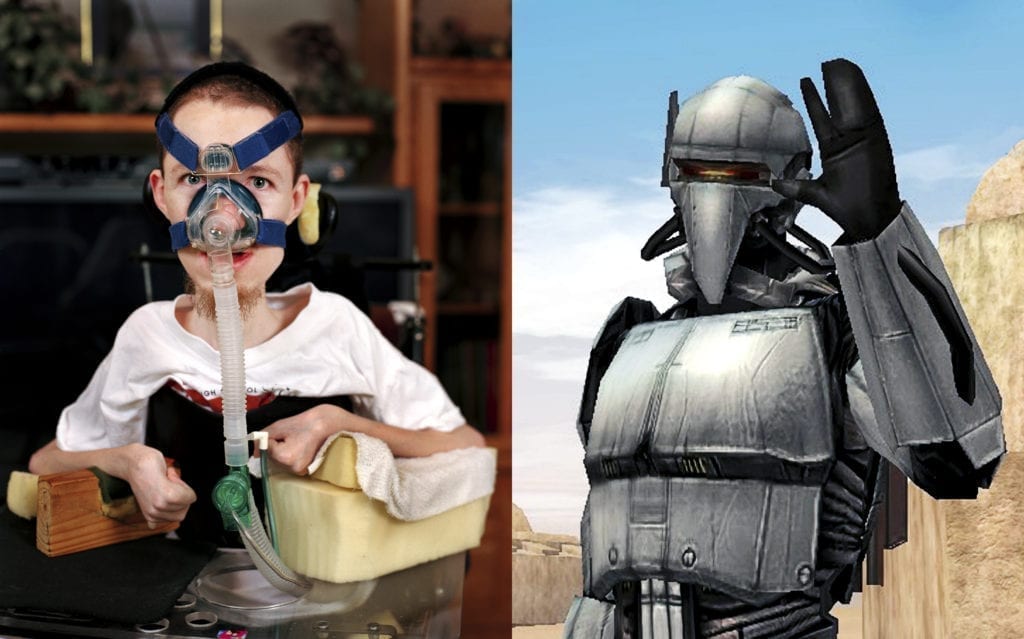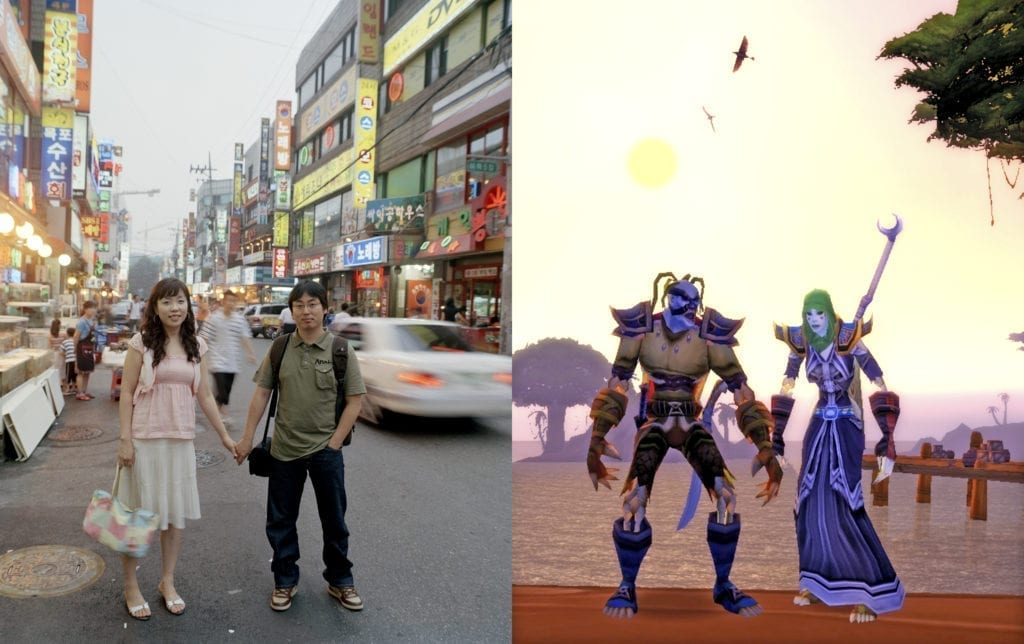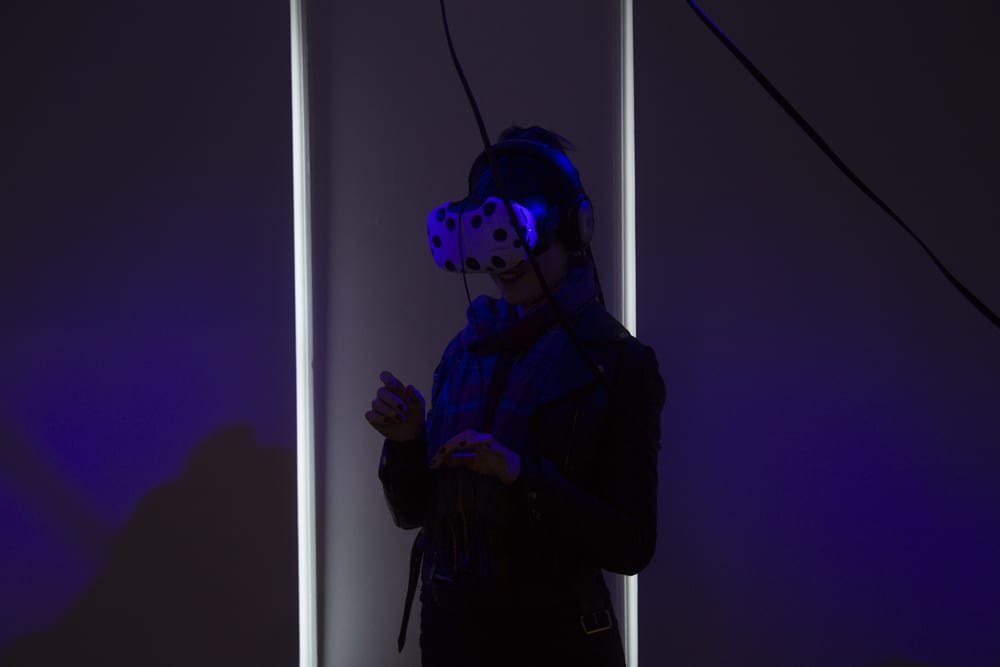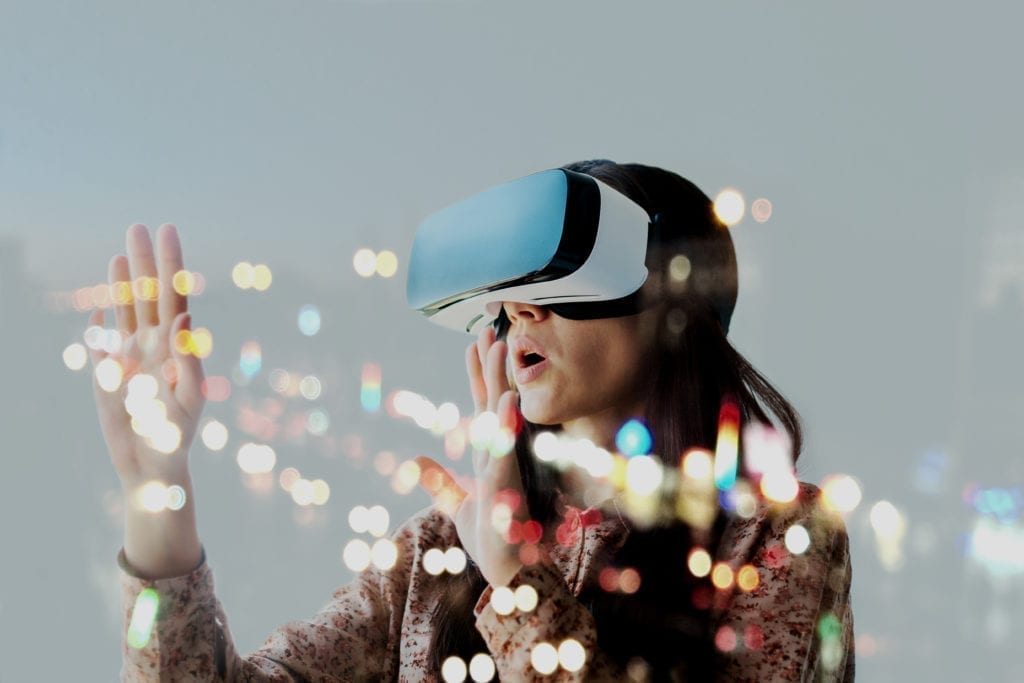In 2003, the British photographer Robbie Cooper was employed to photograph the CEO of a large business. As they talked between shots, Cooper learnt that the man had recently separated from his wife, and didn’t get much of a chance to spend time with his kids – until he found something called Everquest.
Everquest was an early iteration of the 3D fantasy-themed role-playing computer games that cropped up at the turn of the millennium when multiplayer online games were really taking off. Every evening, the businessman would log onto Everquest and, through the game, spend time with his children – or at least the cartoonish, anime-style virtual avatars of his children.
As they played together online, the businessman would ask them fatherly things – how their schoolwork was going, what was going on with their friends, how their mother was getting on. He was using his virtual self to compensate for the absence of his real self.

In the artistic statement for a photography series he later shot, in which Cooper photographed portraits of gamers next their avatars, Cooper quoted Kevin Kelly, co-founder of Wired magazine. “New technology is catapulting images to the centre of the culture,” Kelly said. “We are becoming people of the screen.”
Cooper has left stills photography behind. But his new career remains totally embedded in the language of image-making, for he has founded his own virtual reality company, the Brighton-based Metapixel. Cooper has built what he claims is one of the most advanced virtual reality scanning rigs in the world, designed to create lifelike replications of people in video games. The rig features 105 Nikon D810 36-megapixel cameras – each linked and capable of working symbiotically. Rather than using one stills camera, Cooper has learnt how to use 105 simultaneously, to shoot images that can exist in space rather than hang on a wall.

He thinks getting ahead of that curve and becoming the “first photographer in the room to get VR” is something other photographers should do if they want to position themselves in a rapidly growing new area of imaging. A remarkable new online virtual reality ‘nanodegree’ from the new Silicon Valley-based online university Udacity could be one way of getting started on that journey.
Udacity is an online educational startup that provides 21st century skills-based and vocational courses. With both public and private backing, more than 40,000 current students, and courses spanning topics such as digital marketing, mobile app development, and web development to cutting-edge courses in robotics, machine learning, and even self-driving car engineering.


“People want to develop specific skills that allow them to land a job or start a company. Udacity teaches those skills in a highly focused manner and helps filter students directly into a great job at top-tier companies,” says Matt Sonic, the lead instructor on Udacity’s Virtual Reality nanodegree. “It’s like a university, but built by industry.”
The educational nanodegrees, the first of their kind, are designed to help communities outside major urban centres meet the rising demand for high-tech skills and connect them to Silicon Valley. Udacity’s Virtual Reality Developer Nanodegree programme is aimed at photographers who, like Cooper, want to steal a march on this new, rapidly emerging and quite possibly revolutionary, area of the image-based industries. The VR nanodegree aims to provide its students with “just-in-time” professional skills.
To develop the nanodegree, Udacity’s VP of Learning Christian Plagemann and Matt Sonic interviewed top technology companies and asked what skills they wanted for virtual reality developer positions. From there, Udacity worked with Google VR, Upload, Unity, HTC Vive, Samsung, and Unreal to develop a core curriculum focusing on VR development. The programme grew by focusing on the skills employers want to find.
“Virtual Reality is going to revolutionise how photographers create art,” says Sonic. “Instead of capturing a moment in a frame, photography will transform into capturing a moment in a space. You can still have the frame, but it is no longer required.

“This nanodegree is for everyone interested in VR development, regardless of your prior experience. You’ll learn how to make VR films, some programming, and a lot about how create immersive interactions and environments,” says Sonic.
“Students start by learning cutting-edge mobile VR development. Then, they specialise in either Desktop VR programming using Unity, Desktop VR using Unreal, or 360 Immersive Media development. For anyone wanting to work in VR, even if it’s not on the programming side, having a basic understanding of the whole VR ecosystem, including the software elements, is going to be a big plus in getting work.”

The trend hit headlines in 2013, when Facebook spent $2 billion for Oculus VR. Google quickly got involved by investing in startups like MagicLeap, and Microsoft also became involved in VR and augmented reality (AR) with their large investments in HoloLens. Sony and Samsung followed, launching their own virtual reality prototypes.
The technology is still in its early stages, but may have parallels in the mid-noughties mobile phone phenomenon. At first, mobile phones weren’t user friendly – then suddenly, they became ubiquitous. Now it’s hard to imagine life without one.
“Smartphones enable access to any information from anywhere,” says Christian Plagemann, who co-founded Google’s virtual reality team before becoming the VP of Learning at Udacity. “Now, with virtual reality you can be anywhere and experience any place as if you were there. This new technology is about the experience and the feeling of presence, the understanding of space, environment and scale.
“Creators are not limited to black rectangle screens any more, they can create entire worlds, spaces and experiences – creating with an infinite amount of pixels, immersive sound and the most direct forms of interaction we have ever had available for users.”
“No other medium can create such an intuitive understanding of space and size. Imagine, for example, seeing a beautiful large building on a smartphone, computer monitor, TV or movie screen. You will never be able to truly grasp its size and the feeling of its size. With VR, however, you intuitively feel how the building fits into its surroundings, whether it is overwhelmingly large or just right. You experience space in a very direct, instinctive way.”
In 2003 it was extraordinary, even strange, to find an absent father learning how to spend time with his children through their avatars, in the virtual space. In the next decade, this could become the norm for all of us – how we socialise, make friends, meet new people, play with and educate our children, and spend our leisure time.
“What is really exciting about this new technology is that anyone can learn it quite easily,” says Plagemann. “If you have access to a computer, some creativity and an open mind, you can jump right in.”
For photographers worried about their future prospects, in an industry that sees its traditional revenue streams continuing to dwindle, then given its potential, learning about virtual reality could feel very appealing. Udacity’s Nanodegree might very well be a good place to start – the course is now open for enrollment until June 11th!

Sponsored by Udacity: This feature was made possible with the support of Udacity. Please click here for more information on sponsored content funding at British Journal of Photography.

